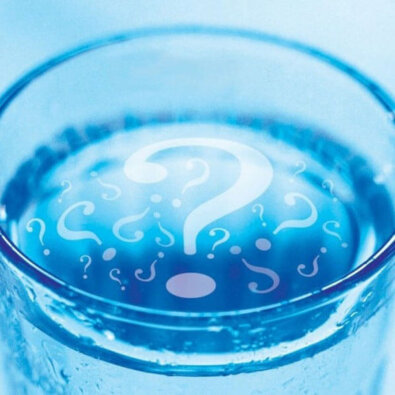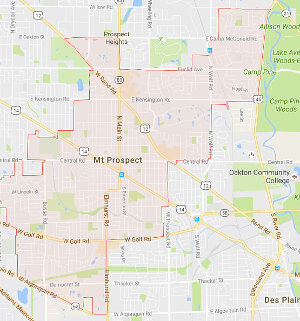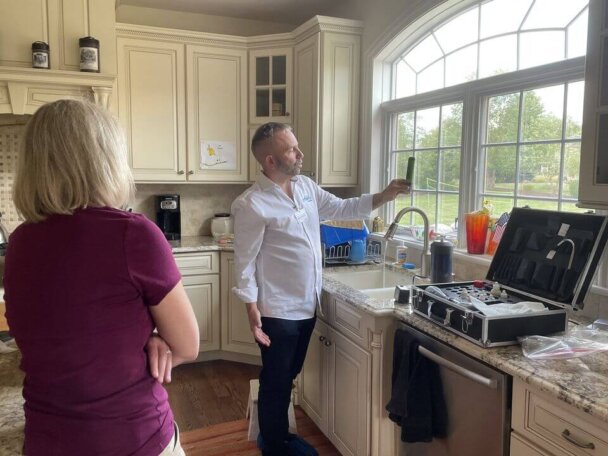Struggling with hard water in Mount Prospect, IL? Angel Water understands the specific water challenges faced by residents here. Our high-quality water softening systems are designed to eliminate excess calcium and magnesium, providing soft, clean water for your home or business. With over 50 years of experience in the water treatment industry, we are dedicated to enhancing your water quality and ensuring your complete satisfaction.
Water Softeners in Mount Prospect, IL
How Do I Choose the Right Water Softener and Get Started?
The process begins with a water test to identify contaminants. Understanding these issues helps us develop a solution. We then conduct a plumbing inspection to determine the best installation spot. Finally, we determine the type and size of the necessary equipment.
Thinking, “Can’t you just tell me over the phone? You installed my neighbor’s system!” We understand – we’re consumers too. However, your neighbor’s water or plumbing might differ slightly. Our goal is to ensure you have perfect water for drinking and bathing. We provide unbiased third-party water testing and employ licensed plumbers as required by Illinois law, prioritizing your family’s health and well-being.
Why Choose Angel Water?
Expertise:
Over 50 years of experience in resolving water quality issues.
Advanced Technology:
Our water softeners use the latest technology for efficient operation.
Customer Satisfaction:
Free water analysis and customized solutions tailored to your needs.
Qualified Professionals:
IDPH Licensed Plumbers in Illinois ensure high-quality service and regulatory compliance.
Highly Rated:
Over 1,000 5-star ratings on Google demonstrate our commitment to excellent service.
Licensed Plumbing Company:
The only water softening company in Illinois that is also a licensed plumbing company.
Lifetime Warranty:
The only company offering a lifetime warranty on our ERR-3700 series filters.
A+ BBB Rating:
An A+ rating with the Better Business Bureau shows our commitment to quality service.
Benefits of Water Softening
Prevent Scale Buildup:
Soft water helps prevent scale buildup in pipes and appliances, extending their lifespan.
Better Cleaning:
Enjoy cleaner dishes, softer laundry, and easier cleaning.
Improved Skin and Hair:
Soft water is gentle on skin and hair, reducing dryness and irritation.

Water in Mount Prospect, Illinois
While Mount Prospect used to get its water from a network of seventeen deep public wells, today only five of those are on standby for emergency use as the city has switched to getting its water from Lake Michigan, like many others in northern Illinois. The water is first treated by Chicago’s Department of Water Management at the Jardine Water Purification Plant, then pumped to the Northwest Suburban Municipal Joint Action Water Agency (NSMJAWA) reservoirs.
From there, it’s pumped through water transmission mains to seven northwest communities, one of which is Mount Prospect, which has three receiving structures placed throughout the city. The water is then distributed to residents.
Website: www.mountprospect.org/
Wikipedia: https://en.wikipedia.org/wiki/Mount_Prospect,_Illinois
Lake Michigan water is the norm throughout Chicagoland, but the safety of it is far from a settled issue. Residents of neighborhoods throughout the region face potential exposure to lead, mercury, chromium, bacteria, volatile organic compounds, and more, and while most of these are within recommended limits, some aren’t. Others need revised EPA guidelines, and yet others just aren’t tested for enough. With lead, for example, the City of Mount Prospect’s own website merely states that utilities aren’t required to notify the public of water exceeding the EPA’s action level unless more than 10% of homes tested exceed that level, and reminds readers to run water before drinking to minimize exposure.
2 contaminants above legal limits.
| Contaminant | Maximum Result | Legal Limit |
| Radium-226 and -228 | 12.10 PCI/L | 5 |
| Radium -228 | 8.70 PCI/L | 5 |
3 Contaminants below legal limits, but above health guidelines.
| Contaminant | Average Result | Health Limit |
| Alpha Particule Acidity | 10.82 PCI/L | – |
| Lead (total) | 0.26 PPB | 0.2 |
| Radium-226 | 3.61 PCI/L | 0.05 |
15 Contaminants found within health guidelines and legal limits.
| Contaminant | Average Result | Health Limit |
| Barium (total) | 34 PPB | 2000 |
| Bromodichloromethane | 5.57 PPB | 100 |
| Bromoform | 0.06 PPB | 800 |
| Chloroform | 9.10 PPB | 70 |
| Copper | 33.35 PPB | 1300 |
| Di(2-ethylthexl) phthalate | 0.20 PPB | 300 |
| Dibromoacetic Acid | 0.34 PPB | – |
| Dibromochloromethane | 3.03 PPB | 60 |
| Dichloroacetic Acid | 6.25 PPM | 70 |
| Manganese | 15.60 PPB | 300 |
| Monobromoacetic Acid | 0.39 PPB | – |
| Monochloroacetic Acid | 0.09 PPB | 70 |
| Total Haloacetic Acids | 12.44 PPB | 70 |
| Total Trihalomethanes | 23.68 PPB | – |
| Trichloroacetic Acid | 5.33 PPB | 20 |
*As reported by the NY Times Toxic Water Report.
About Mount Prospect
Like all the rest of the towns here, the land that is now Mount Prospect was originally inhabited by Native Americans. It’s thought that originally there were temporary or semi-nomadic settlements in the area, but by the 1700s it was settled by the Potawatomi tribe. They held control over it until shortly after Black Hawk’s War, when the 1833 Treaty of Chicago ceded those lands to Yankee settlers.
They cleared the land and established farms, but by 1850 most of them had left for various reasons including the California gold rush. It was German immigrants that replaced the Yankees, mostly Lutherans from southern Germanic states, who had a lasting impact on the character of the area. Intent on preserving their culture in the New World, the new inhabitants created a mostly German-speaking farming community and in 1848 erected Saint John Lutheran Church.
The railway came through the area in 1850, but it wasn’t until the 1870s that an entrepreneur named Ezra Eggleston built a train station, laid roads, divided the land into city blocks, and gave Mount Prospect its name. He had planned to sell the land off after this development at a profit, but his timing was bad—after the Chicago Fire in 1871 and the Panic of 1873 (called the Great Depression at the time), everyone was too busy rebuilding their lives to buy new land.
Nevertheless, after Eggleston sold off his share of the land, people started trickling in. Non-Germans started arriving and building homes and businesses, diversifying the population and kick-starting the local economy. The village was incorporated upon reaching a population of 300 in 1917, but the real population growth was still to come, in the land speculation of the 20s, the postwar suburban migration, and the baby boom.
Mount Prospect has since flourished in the modern era. Randhurst Village, as it’s now known, was built in the early 60s and was the Midwest’s first air-conditioned indoor mall. Today it’s a major retail and tourism center in the area, complementing the Kensington Business Center, home to many national and international companies.
Next year, Mount Prospect will be celebrating one hundred years since incorporation—only time will tell what prospects the next hundred will bring.

How do I know what system is right for my family?
Get Started With A Free Water Test!
Just fill out the form below and we will reach out to schedule the best time for your free water test!
Would You Like to Know More About Water Quality in Mount Prospect?
If you want to understand the quality of the water your family depends on everyday, contact us today. One of our representatives is standing by to help you schedule your free water test. We’ll send one of our local water expert to test the water at your tap and explain common problems and solutions for your specific water composition so that you can rest easy, knowing that your family is drinking the healthiest water possible.
